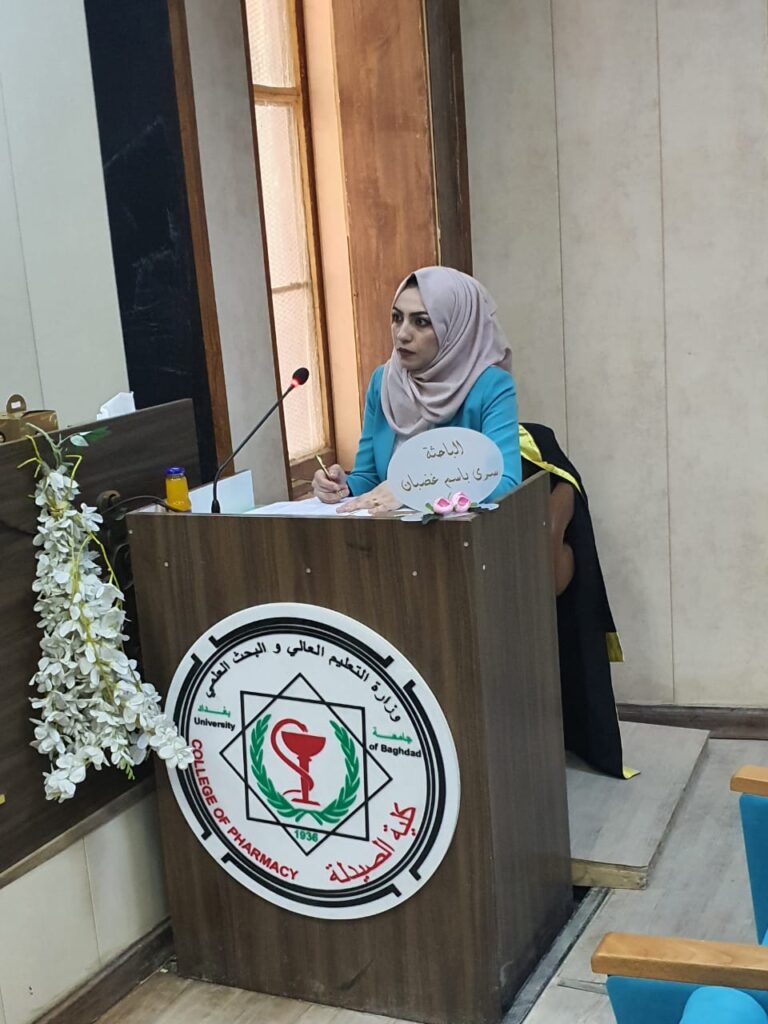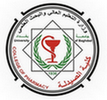The Faculty of Pharmacy discussed the master’s thesis entitled “Phytochemical Investigation of Some Active Components in Iraqi Carica papaya” by Sura Basim Ghadban and her supervisor, Ass. Prof. Dr. Ali Abdulhussain Kasim, in the Department of Pharmacognosy and Medicinal Plants. The study aimed to investigate the phytochemical constituents of Iraqi C. papaya leaves and stems and to evaluate the cytotoxic activity of the leaves extract. In order to investigate the phytochemical constituents of C. papaya leaves and stems extracts, each of the studied parts of the plant was extracted by hot method by soxhlet apparatus using 85% ethanol and fractionation was done by separating the active constituents according to the differences in their polarities using n-hexane, chloroform, ethyl acetate and n-butanol. Preliminary identification of different active constituents was performed by specific chemical tests, thin layer chromatography (TLC), high-performance liquid chromatography (HPLC), and gas chromatography/ mass spectrometry (GC/MS). A qualitative and quantitative assessment of the number of selected compounds was performed using HPLC analysis. Depending on the results of TLC and HPLC, the study revealed the presence of β-sitosterol, stigmasterol, carpaine, caffeic acid, p-coumaric acid, catechin, apigenin, ferulic acid, quercetin ,kaempferol,mycetrin, gallic acid and chlorogenic acid in the different fractions of C. papaya leaves and stems extracts. Isolation of active constituents was done using preparative thin layer chromatography (PLC) and HPLC. The isolated compounds were identified using analytical TLC, analytical HPLC, Fourier-transform infrared spectroscopy (FT-IR), ultraviolet (UV) spectroscopy, high-performance compact mass spectrometer (CMS). This study confirmed the identity of the isolated compound that were β-sitosterol, carpaine, kaempferol, p-coumaric acid, caffeic acid, ferulic acid in different fractions of the C. papaya leaves and stems extracts.An unknown compound that was isolated from the n-hexane fraction of the leaves extract by PLC was analyzed to determine the structure of (S4). FT-IR, UV spectroscopy, and nuclear magnetic resonance (NMR) analysis were performed; the unknown compound was proposed to be squalene. The relative concentration of phytochemical constituents of the different fractions of C. papaya was different between the leaves and the stems extracts. The GC/MS analysis revealed the presence of a number of compounds that are known to have many biological and pharmacological activities in the n-hexane fraction of C. papaya leaves and stem extracts. Finally, the ethyl acetate fraction of C. papaya leaves showed significant cytotoxic activity that was determined using MTT assay, against breast cancer (MCF-7) and lung cancer (A549) cells.





